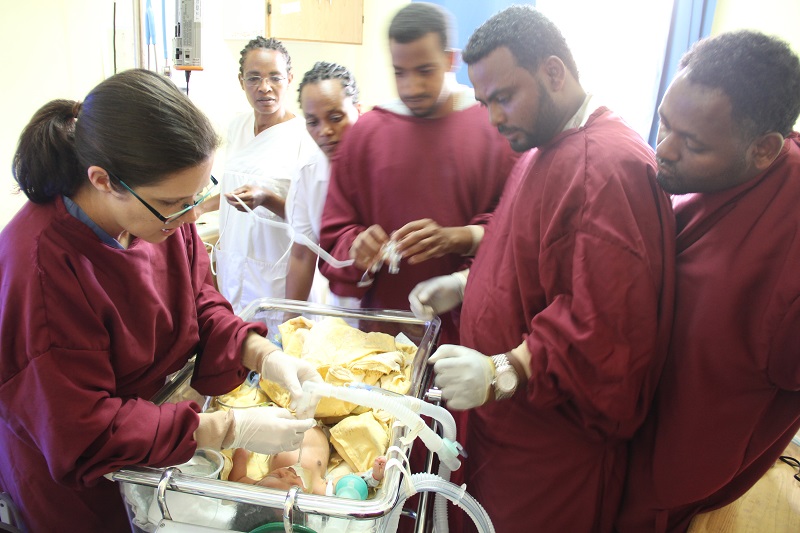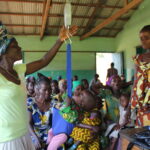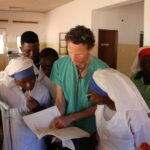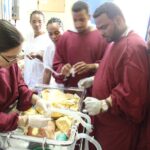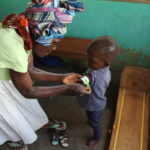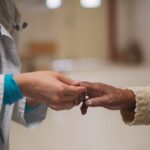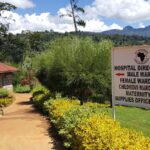Participatory Learning and Action (PLA) and its Application to Medical Missions
PLA Participatory Learning and Action has long been the foundation of best practices in community development. However, I believe it has practical application across all cross-cultural and global health work; in the community and in the hospital.
I remember many years ago on a short-term surgical outreach, we had a surgeon who acted very disrespectfully, slapping the hand of a local surgeon as they were operating together. He then later dumped a tray of surgical instruments, because he was upset with the staff. Needless to say, this kind of egocentric behavior has no place in any medical facility let alone a cross-cultural mission program. These types of programs are meant to edify, build up, and encourage local medical professionals; we need to pursue that end with great humility.
A PLA Attitude is Everything
Another event that was less intentional happened with a physician in the Dominican Republic. He was a highly qualified MD Ph.D., board certified as an emergency department physician. I had invited him to participate in a curative care component in a six-month Community Health Worker (CHW) project we were directing in the Dominican Republic. This was one of the projects we designed to use short-term healthcare teams to facilitate the sustainability of horizontal community-based healthcare projects. I had invited this physician to come along for the advance work because of his clear passion for service. I was looking for physicians who could lead such projects, and he seemed like the ideal candidate. He was brilliant, he was a devout Christian, he had a passion for service, and he was willing to spend weeks at a time leading groups. It seemed like a no-brainer, so I invited him to help with the coordination and setup of the medical portion of the project. I needed to see how he would interact with local medical staff and if he was humble enough to first listen, learn, and develop a sense of his environment. This was when I was working with Mercy Ships. We were coordinating this project in advance of the ship visit to the local port. This meant there were still a lot of meetings with local government health officials about credentialing, visiting staff, and other such issues. This physician accompanied me to my meetings with the local hospital director and staff. After taking him to the hospital, he immediately began teaching and directing in the hospital as if he had just been made director of the hospital. He injected himself into a physician staff meeting and presented his opinion on how to manage a trauma patient on one of their wards. What he did not realize was that his behaviors and actions were received in such a way that the staff physicians were being made to feel less capable and less qualified. It was an attitude that said, I know you are really not very good at what you do, but don’t worry; I am here, and I can teach you everything you need to know. I have great respect for this physician professionally, but he needed to learn that there are principles and practices for working in these situations. When we attempted to pull him out of one situation that he had injected himself into, he lost his temper and raised his voice. If he had been patient and willing to listen and learn what we had to teach him, he would have been an enormous asset to our program.
PRA or PLA is what this physician needed to learn; it is the basis for this kind of cross-cultural interaction with all of the community stakeholders. PRA stands for Participatory Rural Appraisal, and it is sometimes referred to as PLA, which stands for Participatory Learning and Action.
Chambers describes PRA as “a growing family of approaches, methods, and behaviors to enable people to share, enhance and analyze their knowledge of life and conditions, and to plan, act, monitor and evaluate” (2002) (p. 3). PLA is about changing behavior and attitudes from dominating to facilitating, gaining rapport, asking local people to teach us, respecting them, having confidence that they can do it, and handing over the stick. It is about empowering and enabling them to map, model, diagram, list, count, estimate, rank, score, analyze, present, plan, act, monitor, and evaluate themselves, and to own the outcome (Chambers, 2002).
Those engaged in community-level global health initiatives or working with community stakeholders to design a project or program need to practice participatory methods in pairs or small groups. I say this because most of the pitfalls of Participatory Learning and Action (PLA) are personal traits that are difficult to recognize in yourself. Until you develop participatory skills from experience, it is best to have someone with you who also understands these concepts so they can point out when you miss the mark.
According to Chambers (1999), “participatory learning and action” is a more accurate title for what practitioners of PRA do, but PRA is the common term used to describe participatory programming. PRA is also used by some to stand for Participatory Reflection and Action, because at the center of PRA are “self-critical awareness, personal behavior and attitudes, and engagement with action” (Chambers, 1999, p.7). When conducting PRA, it is important to remember that “we are not teachers, transferors of technology, but instead conveners, catalysts, and facilitators” (Chambers, 2002). In participatory methods, we have to learn to put our knowledge and ideas in second place; this is true from site assessment all the way to project implementation (Chambers, 2002). The goal is always to “enable local people to do their own investigations, analysis, presentations, planning and action, to own the outcome, and to teach us, sharing their knowledge” (Chambers, 2002). We must learn to hand over the driver’s seat and facilitate the community’s appraisal, presentation, analysis, planning, action, monitoring, and evaluation (Chambers, 2002). You may have heard of RRA (Rapid Rural Appraisal); however, there are clear distinctions between PLA and RRA. RRA is about data collection, with the analysis done mainly by the outsider (Chambers, 2002). PRA, which is an evolved form of RRA, is meant to be empowering: a process of appraisal, analysis, and action by local people themselves (Chambers, 2002).
References:
Common Mistakes in Implementing Participatory Learning and Action
Chambers, in his 1999 publication, “Relaxed and participatory appraisal: Notes on practical approaches and methods,” describes some common errors in the application of PLA principles, which include the following. These are things we all do at times. However, when working cross-culturally, we need to be extremely cognizant of them so we can learn and grow as facilitators.
- Interrupting and interviewing people, and suggesting things to them, when they are trying to concentrate on mapping, ranking, scoring, diagramming
- Imposing “our” ideas, categories, values without realizing we are doing it, making it difficult to learn from “them” and making “them” appear and feel ignorant
- Rushing, lecturing, and interrupting instead of listening, watching, and learning
(Chambers, 1999)
Set Objectives to Stay on Track
One of the best ways to start the process for global health projects is to write up an outline for a project. PLA methodologies help us think through the process of guiding the community to design, monitor, and evaluate their own health project. This is not about creating a formal 10-page proposal. Nevertheless, it should contain some key goals and objectives set by the community and local health workers. Using PLA methods, we can help identify specific areas of need the community would like to address. According to Dr. Rajni Bagga (2012) of the National Institute of Health and Family Welfare in New Delhi, PLA has been shown to have a number of benefits for community health development.
Benefits of using PLA for Health Development
- Use and application of PLA is widespread, applicable, and considered highly useful in health programming.
- Generates rapport and forces outsiders to learn, listen, and understand.
- It provides highly accurate information: Local people’s knowledge of local conditions is often greater than first supposed.
- Plans drawn up in a prescriptive manner by local people are more likely to work than plans drawn up by outsiders.
- The participative nature of the process is a “development benefit” in itself, in terms of empowering people.
- It is highly cost-effective.
Blog Edits by: Lynley Hatcher
Feature photo is of CHSC missionary Dr Michelle Yates who exemplifies PLA principles in her work cross-culturally.
References:
Chambers, R. (1999). Relaxed and participatory appraisal notes on practical approaches and methods. Brighton UK: Institute for Development Studies at Sussex University. Chambers, R. (2002, January). Retrieved February 15, 2012, from Institute of Development Studies at University of Sussex: http://www.ids.ac.uk/ids/participatory Learn more about PLA Here: https://www.participatorymethods.org/glossary/participatory-learning-and-action-pla |
